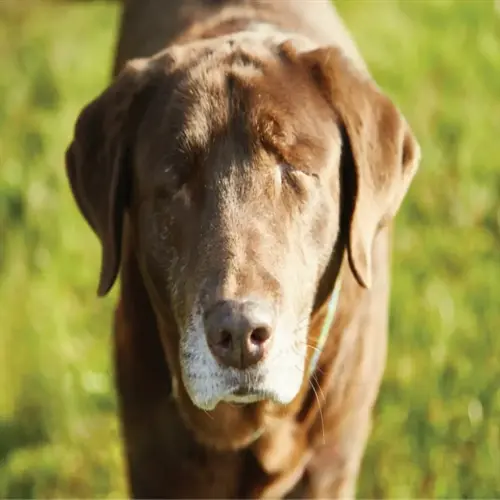Understanding Cat Body Language Completely

Written by
John Williams
Reviewed by
Prof. David Walsh, Ph.D.Grasping cat body language means looking for calming signals and bonding behaviors related to the context
Tail position, ear position, and pupil size or any changes indicate basic emotional states
A slow blink can promote trust, while an exposed belly often indicates readiness to defend instead of playing
Distinguish a playful hindquarter wiggle from an anxious wag of the tail, or from hiding behaviors caused by anxiety
Overgeneralizations, like "purring equals happy", do not account for the pain or stress contexts of feline communication
Observing the cats' behavior and styles on an ongoing basis, helps humans communicate with and have a better relationship with a feline.
Article Navigation
Comprehending cat body language changes the way you communicate with your cat. I learned this the hard way when my cat Bella lay her ears back during a thunderstorm. I mistakenly took that as being angry when she was terrified. Recognizing these signals can help you avoid miscommunication and foster a sense of trust.
Look out for three key signals. Tail position is a sign of confidence or fear. Ears give clues to curiosity or stress. The size of pupils indicates whether one is excited or anxious. The context is important. For example, a flicking tail denotes play in toy pursuit but means irritation at the vet's.
Calming Signals and Bonding
Cats use calming signals to de-stress, and bonding behaviours reinforce their bonds with us. My rescue cat Oliver offers me slow blinks when he is uncertain. I respond with a slow blink in return, which says, *"You are safe. Research has shown that this type of interaction builds trust through mutual understanding.
The environment influences the way in which cats communicate with one another. A warm environment will encourage purring and head rubbing. A harsh atmosphere will arouse hiding or tail tucking. Observe your kitty's personality. Some kittens will knead blankets for comfort, while others prefer fine rubbings of the chin.
Everyone is different. My Maine Coon buffs his heels together while I bond with him, while my Siamese does not make a peep. Notice a special signal from your cat. If you consistently respond to the way your cat communicates, you can strengthen your relationship over time.
Slow Blinking
- Cats slowly close and open eyes to show trust and relaxation. This feline body language reduces tension during interactions. Return slow blinks to confirm safety and build mutual understanding.
Yawning
- Exaggerated yawns indicate stress relief attempts. Observe this during vet visits or loud noises. Respond by speaking softly and reducing direct eye contact to lower anxiety levels.
Head Turning
- Deliberate head turns signal discomfort. Cats use this to de-escalate tension. Freeze movement and lower your body position when observed to show non-threatening intentions.
Grooming Invitations
- Brief licks during petting invite mutual grooming. Initiate gentle chin scratches instead of full-body strokes. Stop if ears flatten or skin twitches to respect boundaries.
Body Language Mirroring
- Cats may copy relaxed postures like sitting or lying down near you. This mirroring behavior indicates comfort and social bonding. Maintain calm positions to encourage continued peaceful interaction.
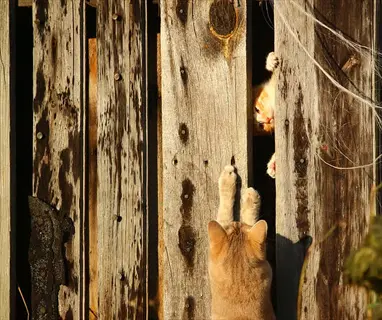
Safe Spaces
- Cats need enclosed retreat areas for security. Provide covered beds at multiple heights near family areas. Ensure easy escape routes to reduce defensive reactions during stress.
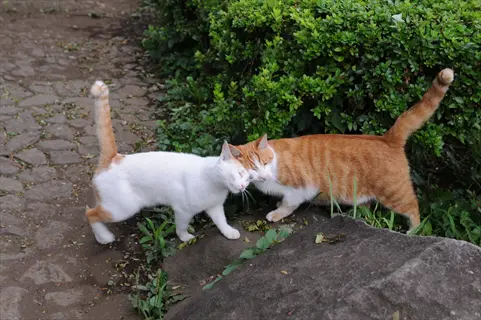
Scent Exchange
- Cheek rubbing deposits facial pheromones. Gently present your hand at nose level for investigation. Avoid forcing contact to establish voluntary scent-sharing routines.
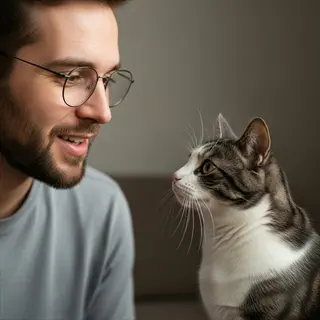
Voice Conditioning
- Use consistent low-volume vocal tones during feeding. High-pitched sounds trigger hunting instincts while calm tones promote relaxation. Pair words with positive experiences.
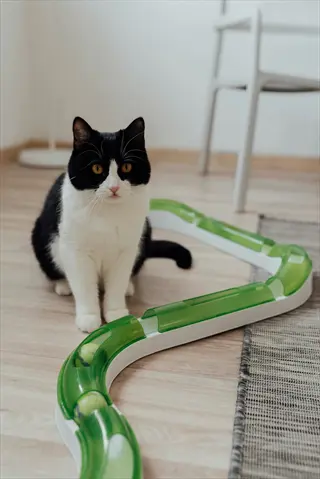
Play Rituals
- Schedule five-minute play sessions before meals. Mimic prey movements with wand toys to satisfy hunting needs. End sessions before overstimulation occurs to prevent aggression.
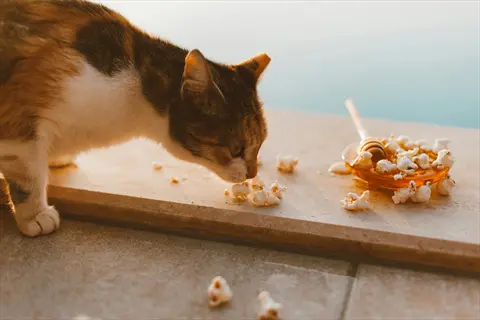
Treat Associations
- Offer high-value treats during calm moments to build positive associations. Place treats near you without direct eye contact. Use this during visitors' arrivals to reduce territorial stress.
Context and Misinterpretation Risks
Your cat's environment largely determines how it communicates. Indoor cats lie comfortably stretched out on window sills, showing they are relaxed. Outdoor cats with tight muscles crouch close to the ground, showing they are alert. I discovered this by observing how differently my cat reacted to birds that were either inside or outside the house.
Never depend on one signal alone. A cat that is purring near a window may be content. The same purr at the veterinarian's may indicate that it is under stress. Check for flat ears or tail tension. A combination of signals is a better indication of the cat's feelings.
The biggest myth? Exposed stomachs always invite rubs. When my cat Mittens lies on her back, it's a sign of trust, not an invitation to play. Touching often leads to bites. This position enables them to protect themselves quickly. Honor that trust with slow blinks instead.
Exposed Belly
- While an exposed belly often signals trust, it can indicate defensive readiness. In unfamiliar environments, this position allows quick access to claws for protection.
Purring Sounds
- Purring typically suggests contentment but may signal distress during vet visits. Always check for tense posture or dilated pupils to confirm emotional state.
Tail Flicking
- Gentle tail movements during play indicate focus, while rapid thrashing shows irritation. Misreading these cues may trigger defensive reactions.
Kneading Behavior
- Kneading usually expresses contentment but can become compulsive during stress. Note if claws are extended excessively or skin becomes irritated.
Vocalization Changes
- Increased meowing might signal hunger or medical issues. Context determines whether it's normal communication or requires veterinary attention.
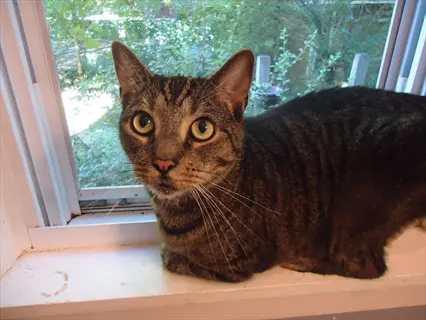
Home Territory
- Relaxed posture in familiar spaces signals security. Raised tails near feeding areas show confidence. Mistaking this for universal comfort may cause boundary issues.
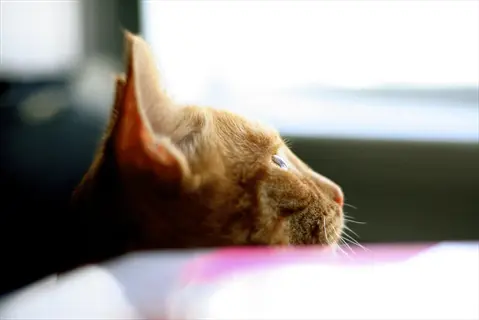
Outdoor Encounters
- Dilated pupils outdoors often indicate hunting focus rather than fear. Confusing this with anxiety may lead to unnecessary confinement decisions.
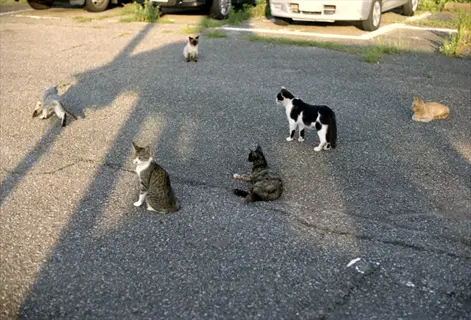
Social Interactions
- Slow blinking at family members shows trust. Similar eye contact with strangers might signal assessment. Misreading could trigger defensive reactions.
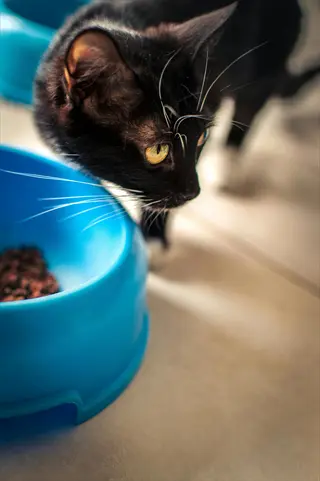
Resource Guarding
- Tense posture near toys or food indicates possession. Interpreting this as playfulness may provoke aggression during handling attempts.
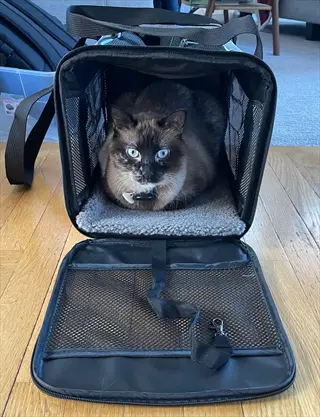
Transport Situations
- Excessive grooming in carriers signals stress not cleanliness. Assuming comfort may delay necessary anxiety-reduction measures.
Core Body Language Signals
Tail positions reveal a great deal about a cat's emotions. A vertical tail with the end curved indicates confidence, while a lowered tail tucked between the legs is an indication of fear. My cat Luna's tail puffs out like a bottle-brush when she is startled. Gentle flicks of her tail during play mean something totally different from the violent thrashing when she is annoyed.
Positions of the ears reflect the animal's current emotional state. Ears forward indicate curiosity about something, as when my cat watches birds. Ears turned sideways, resembling airplane ears, indicate stress, such as during visits to the veterinarian. Ears flattened indicate aggression, which I observe during fights with neighborhood cats over territory.
Be careful of those pupil changes. Dilated pupils indicate excitement or fear in new environments and during play. Constricted pupils indicate contentment when eating. Avoiding eye contact typically indicates discomfort, such as when strangers approach too quickly.
"Whisker positioning" completes the image. Whiskers pointed forward denote interest in toys or food. When whiskers are flattened against the cheeks, it signifies stress during car rides. Relaxed whiskers that are fanned out demonstrate pure joy during nap time in the sun.
Tail Positions
- Vertical tails indicate confidence while low tails show fear. Puffed tails signal agitation, and tucked tails reveal anxiety. Quivering demonstrates excitement during greetings.
Ear Orientations
- Forward-facing ears suggest curiosity. Sideways airplane ears indicate stress. Pinned-back ears display aggression. Independent swiveling shows alertness to sounds.
Eye Expressions
- Slow blinking communicates trust. Dilated pupils show arousal or fear. Constricted pupils reveal contentment. Avoided eye contact signals discomfort.
Whisker Placement
- Forward-pointing whiskers indicate curiosity. Flattened whiskers against cheeks show stress. Relaxed, slightly fanned whiskers demonstrate contentment.
Vocalizations
- Purring usually means contentment but can indicate pain. Hissing signals defensive warnings. Chirping shows frustrated hunting. Yowling indicates distress.
Emotional State Indicators
Identifying positive emotional groupings is beneficial for forming bonds. A confident cat displays its tail erect and its whiskers relaxed. During affection, my cat Charlie head-buts my hand and purrs. Playful cats often exhibit butt wiggling, which precedes a pounce, along with chirpy vocalizations.
Observe for negative emotional clusters in combinations. Fear is often characterized by a cowered stance, with flattened ears and whiskers. Tense muscles indicate stress, ears turned sideways, and a tail tucked. My cat hides in beds with dilated pupils when fireworks occur.
Sounds create the picture. Purring while being petted indicates satisfaction. Hissing with an arched back usually means defensive aggression. Groaning low in pitch during a visit to the veterinarian, accompanied by flat ears, indicates some distress. Always watch for sounds in conjunction with postures for accurate interpretation.
Contentment
- Relaxed body posture with limbs stretched out. Half-closed eyes and slow blinking. Upright tail with slight curve at tip. Soft purring vocalizations.
Affection
- Head-butting against people or objects. Kneading soft surfaces with paws. Following owners between rooms. Trilling or chirping sounds.
Playfulness
- Dilated pupils and forward-pointing ears. Light tail flicking during stalking. Play bow position with front lowered. Gentle mock-biting behavior.
Confidence
- Upright tail with fur lying flat. Relaxed whiskers slightly fanned out. Direct but soft eye contact. Comfortable exploration of environments.
Curiosity
- Ears forward and slightly angled. Whiskers pointed toward focus object. Slow, deliberate movements. Soft chirping or clicking sounds.
Fear
- Crouched low to ground with tail wrapped tightly. Dilated pupils and flattened ears. Whiskers pulled back against face. Trembling or silent stillness.
Stress
- Excessive grooming creating bald patches. Pacing or restless movement. Tense loaf position with tucked paws. Increased lip-licking or swallowing.
Anxiety
- Ears swiveling independently. Tail held low with occasional thrashing. Avoidance of eye contact and interaction. Low-volume repetitive meowing.
Aggression
- Arched back with piloerection. Ears pinned backward. Hissing, growling or spitting. Tail puffed up and thrashing violently.
Depression
- Lethargic movement with drooping posture. Ears forward but drooping downward. Reduced interest in food or play. Minimal vocalization responses.
Playful vs. Stress Cues
*Hunting behaviors* display concentrated play. *Signs of anxiety* display stress. My cat, Ziggy, crouches with a wiggling back end, pouncing on toys in a playful stalk. When stressed, he flattens on the floor with tense muscles braced for flight.
Observe subtle differences in body posture even though the body posture may appear similar. The play bow has its front legs relaxed and its hindquarters relaxed. The crouch of stress has its feet tense and ready to spring. The context is important: toy mice bring on excitement, while strange objects bring on fear.
Tail movements can tell opposite stories: Side-flicking while chasing a toy is a sign of focus. Rapid-fire thrashing when being petted means overstimulation. I learned this the hard way when I pet my cat too long, and his tail started violently slapping the floor, requiring me to move to a different space.
Vocalization patterns vary greatly. When playing hide-and-seek, you'll hear chirps and short, sometimes broken, trills. In times of stress, you'll hear lower growls, or suddenly, nothing after yowling. If sounds are paired with body cues, it can prevent misinterpreting emotions.
Hunting Posture
- Crouched position with rear end wiggling before pouncing. Eyes focused intensely on target. Ears forward in alert position. Body weight shifted to hind legs.
Tail Signals
- Gentle side-to-side flicks during stalking. Tail held at medium height with relaxed fur. Occasional quivering when excited. No thrashing or puffing observed.
Vocalizations
- Short chirps or trills when spotting toys. Soft meows during interactive play. Absence of growling or hissing. Vocalizations stop when play pauses.
Eye Expressions
- Dilated pupils showing excitement. Brief slow blinks between actions. Focused gaze without staring. Eyes return to normal after play ends.
Recovery Patterns
- Quick return to relaxed posture after play. Willingness to re-engage immediately. Normal grooming between sessions. No hiding or avoidance behaviors.
Defensive Posture
- Crouched position with tense muscles. Body flattened against surfaces. Ears rotated sideways or backward. Weight distributed for quick escape.
Tail Signals
- Tail tucked tightly against body. Rapid thrashing motions. Fur standing on end. Low tail position without movement.
Vocalizations
- Low growls or hisses. Prolonged yowling sounds. Repetitive meowing. Sudden silence after vocal outbursts.
Eye Expressions
- Constantly dilated pupils. Avoided eye contact. Staring without blinking. Visible third eyelid covering eyes.
Recovery Patterns
- Prolonged hiding after stressor. Excessive grooming sessions. Avoidance of previously enjoyed areas. Delayed return to normal activities.
5 Common Myths
Cats purr only when they are happy and content with their environment and interactions with humans.
While purring normally indicates that a cat is at rest or being petted, cats also purr when they are sick, injured, or in some type of stressful situation to calm themselves. Veterinary research has documented cats purring in labor, severe injury situations, or a near death scenario, all describe as self-soothing behavior. This dual purpose vocalization is thought to have evolved as a means of survival, to calm themselves while they recover. Always take into account the overall body language a cat is exhibiting when they are purring such as tense posture or dilated pupils.
Cats' tail wagging indicates pleasure in the same way dog tail wags denote pleasure.
A cat's tail wags or flicks not so much from pleasure, but from irritability, over-sensitivity or ambivalence. Slow swishing of the tail during stalking and hunting indicates the concentration of the animal, while if the cat starts to whip its tail with snap swishing and rapidity, it denotes either that it is annoyed, or is about to become aggressive. Cats do not a wag their tails in a contented way, and when relaxed the tails are held either still, or in an upright position. This fact is important to bear in mind, for a tail wag may be pernicious, and result in bites when a person does not interpret the movements of the tail correctly, and continues to stroke the cat in spite of irritabilities, that may indicate themselves in such signs as twitching skin, or scratched and flattened ears.
When cats roll over to reveal their abdomen, they always wish for a belly rub from their owners or other humans close by.
The exposure of the belly means that the cat is feeling trust in a safe environment, but it is not a position that invites petting. This position gives immediate access to claws for defence against possible attack. Cats instinctively guard their vulnerable belly area and react to petting on this part of the body with teeth and claws. There are certain exceptions, which are frequently seen in certain individual cats that have been taught to be tolerant of this through many sessions of positive reinforcement. Instead of petting the abdomen, try to return the trust that your cat feels for you but giving slow eye blinks or verbally praising the cat without physical contact.
Cats that hiss and growl at people are aggressive animals that should be punished or isolated for aggressive displays toward humans.
Hissing and growling are forms of fear-based defensive communication not aggression. Hissing and growling are vocalizations used by cats to set limits on people when they feel threatened. The cat feels threatened when it is in pain, when it is in an unfamiliar environment, or when it is forced to interact with people. Punishment only adds to the already present stress level and brings on even greater defensive reactions. The solution is to remove all threatening stimuli, provide escape routes and allow the fearful cat to run away from the situation. Hissing and growling are calls for help voiced by distressed individuals, and as in situations in which somebody shouts at another individual to "leave me alone" when over-stressed, indicate that environmental adjustments are needed and not punishment for those voicing objections.
Cats tend to be solitary creatures who enjoy being alone and do not form meaningful social bonds with people or other pets who share their home.
Cats indeed are creatures that form strong social bonds, but it is in a different way than do dogs. Studies have shown that cats greet those people whom they trust by holding their tails erect in the air, by head butting these people, and by seeking close proximity to those they trust. They develop secure attachments to those people which is shown in a reduction of stress when their owners are present. A multi cat household provides the opportunity for interaction as may be seen in mutual grooming and sharing of territories. Independent beings, the cat does enjoy interacting with others on their terms. If this need is not met, it leads to loneliness and undesirable behaviors in our domesticated felines.
Conclusion
The context is always critical when interpreting your cat's signals. For example, the tail flick while playing is different from the tail flick while at the veterinarian's office. I have seen clients incorrectly interpret their cat's stress signals as an invitation to play. This leads to accidental overstimulation and erodes the trust between cat and owner.
When the signals are misread, communication voids occur. Belly exposure is taken as an invitation, which gives rise to bites. If the animal is thrashed about by the tail when being petted, it brings about undue stress. These mistakes cause rifts in relations, but they can be mended with observant patience and adjustment.
Continuous learning respects your cat's unique personality. My neighbor's cat likes to be rubbed on the cheek, while mine prefers having the chin scratched. Keep track of your cat's special likes in various situations. Their reactions teach you more than any guide can.
You can change your relationship. Start tomorrow by giving slow blinks when you are together in moments of calm. Please pay attention to how your cat's ears are positioned when you play with them. These small steps will help you establish a lifelong way of communicating with your cat.
External Sources
Frequently Asked Questions
How do cats show they've chosen you as their favorite person?
Cats demonstrate bonding through slow blinking, head-butting, following you between rooms, and sleeping near you. They reserve high-pitched trills for trusted humans and initiate grooming sessions. Consistent seeking of physical proximity signals a deep social attachment.
How do cats apologize after misbehavior?
Cats express regret through reconciliation behaviors:
- Slow blinking to diffuse tension
- Head-butting or cheek rubbing against you
- Presenting their side instead of direct approach
- Soft trilling vocalizations
- Lying nearby with exposed belly (in safe environments)
Where do cats prefer to be petted for bonding?
Focus on scent-exchange areas where cats deposit pheromones:
- Cheeks and jawline for gentle rubs
- Base of ears using circular motions
- Chin scratches avoiding the throat
- Upper back along the spine
- Avoid belly or tail base unless solicited
What does slow blinking communicate in cat language?
Slow blinking is a primary trust signal in cat body language. Cats use deliberate eye closures to indicate non-threatening intentions. Returned slow blinks build mutual understanding and safety. This behavior reduces tension during interactions and confirms emotional security between cats and humans.
How can you identify stress in your cat's body language?
Key stress indicators include:
- Flattened ears rotated sideways
- Tail thrashing or tight tucking
- Excessive grooming creating bald patches
- Pupils fully dilated in normal light
- Avoiding elevated perches or hiding constantly
Do cats understand human apologies after conflicts?
Cats recognize reconciliation attempts through behavior changes, not words. They respond to:
- Calm vocal tones replacing angry tones
- Offering space instead of forced interaction
- Presenting treats without direct eye contact
- Resuming normal routines without lingering tension
- Slow blinking sequences to rebuild trust
What tail signals indicate playfulness versus stress?
Playful tails show gentle flicks during stalking and medium height positioning. Stress tails display violent thrashing, puffiness, or low tucked positions. Context matters, wiggling hindquarters signal play readiness while thrashing during petting indicates overstimulation requiring space.
Why do cats expose their bellies if they dislike being touched there?
Belly exposure demonstrates trust in secure environments but rarely invites touching. This position allows quick defensive claw access if threatened. Most cats protect their vulnerable abdomen instinctively. Only cats conditioned through positive reinforcement occasionally accept belly rubs without defensive reactions.
How do cats express affection non-verbally?
Affectionate behaviors include:
- Kneading soft surfaces near you
- Grooming your hair or clothing
- Curving tail-tip around your limb
- Sleeping pressed against you
- Presenting toys as ritual offerings
What vocalizations indicate different emotional states?
Cats use distinct sounds for emotional communication:
- Purring: Contentment or pain/stress relief
- Trilling: Greeting trusted humans
- Hissing: Fear-based boundary setting
- Yowling: Distress or discomfort signals
- Chirping: Frustrated hunting excitement
